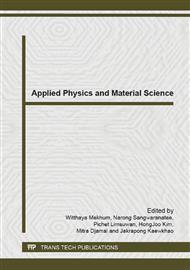p.139
p.143
p.147
p.151
p.155
p.159
p.163
p.167
p.171
Waste Silicon Carbide as Filler for Natural Rubber Compounds
Abstract:
This work studied possibilities of using waste silicon carbide (SiC) particles from abrasive industry as alternative filler in natural rubber (NR) compounds. The rubber was prepared by using natural rubber grade STR 5L and waste silicon carbide loading of 0, 10, 20, 30 and 40 phr. Firstly, the rubber were compounded by using two roll mill and then using Oscillating Disc Rheometer for studying cure time at one hundred and fifty degree Celsius. Then, shear viscosity and extrudate swell of the compounded natural rubber were characterized by using capillary rheometer at 100°C. The result showed that the apparent shear viscosity increased slightly with increasing waste silicon carbide loading and the percentage of extrudate swell was found to be a decreasing function of the filler loading. Then, test tensile by using the prepared samples for studying tensile modulus, tensile strength and elongation at break. The result showed that tensile modulus and tensile strength increased with increasing waste silicon carbide. On the other hand, the elongation at break of the filled natural rubber decreased with increasing waste silicon carbide. Finally, bring the sample to test hardness by using shore A. Results indicated that waste silicon carbide direct variation with the indicator of hardness.
Info:
Periodical:
Pages:
155-158
Citation:
Online since:
June 2014
Price:
Сopyright:
© 2014 Trans Tech Publications Ltd. All Rights Reserved
Share:
Citation:


